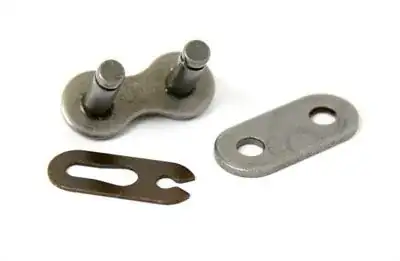I've got to replace the timing chain on a XS400 motorcycle. To do this I must break the chain, then connect it back up once it's in position.
I've been practicing on the broken chain, which has already been removed, with a chain breaker. I can break the chain and remove the pins fine, but when it comes to replacing them I have problems.
The pin won't seat in the chain so I can't use the riviting punch to push it through the link. Sometimes I end up bending the pin, or at the very least, it slips out to the side.
Is there some way I can seat the pin in the chain links before I use the rivet tool to flatten the heads?
